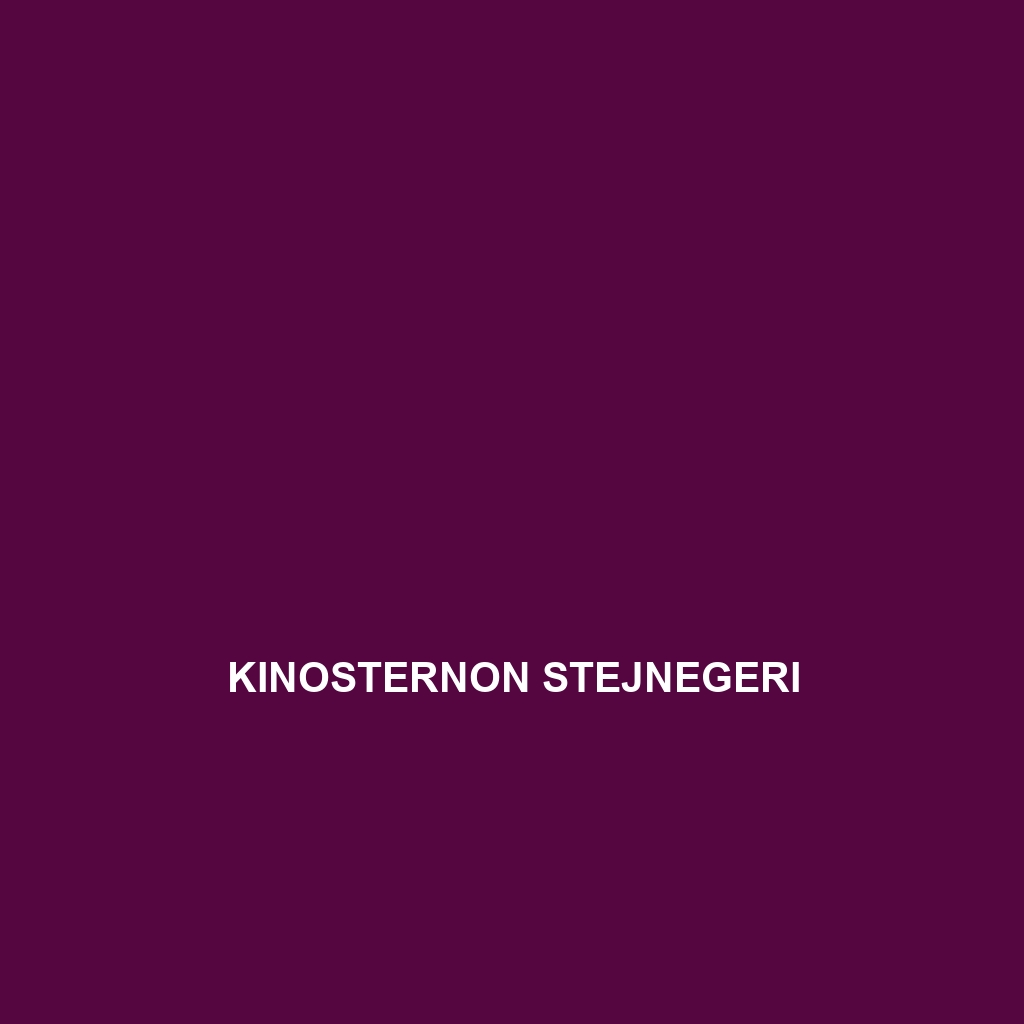Common Name
Kinosternon stejnegeri
Scientific Name
Kinosternon stejnegeri
Habitat
Kinosternon stejnegeri, commonly known as Stejneger’s mud turtle, primarily inhabits freshwater environments across the southeastern United States, specifically in regions such as Florida, Alabama, and Georgia. These turtles favor shallow waters including ponds, marshes, and slow-moving streams, often surrounded by lush vegetation. The habitat is characterized by warm, humid climates typical of subtropical and tropical ecosystems. The abundance of aquatic and semi-aquatic plants provides shelter and breeding grounds for this species. Because of their preference for these environments, Kinosternon stejnegeri is rarely found in marine habitats or arid regions.
Physical Characteristics
Kinosternon stejnegeri is a medium-sized turtle, typically measuring between 5 to 8 inches in length. The shell is characterized by a smooth, oval shape, with a carapace that ranges in color from dark brown to olive green. One of the distinguishing features of this species is the presence of a distinct hinge on the plastron, which allows the turtle to close its shell tightly. This adaptation provides effective protection against predators. The skin is predominantly dark with lighter spots, aiding in camouflage within its natural habitat. The head is relatively small, equipped with prominent, beady eyes and a beak-like mouth, adapted for its diverse diet.
Behavior
Diet
This species is classified as an omnivore, feeding on a varied diet that includes aquatic plants, invertebrates, and small fish. The feeding habits of Kinosternon stejnegeri are opportunistic, allowing them to adapt to the availability of food sources in their environment. Insects, worms, and crustaceans comprise a significant portion of their diet, and they have been observed foraging along the muddy bottoms of their habitats. With their beak-like mouths, these turtles efficiently capture and consume their prey.
Reproduction
The reproductive cycle of Kinosternon stejnegeri typically occurs from late spring to early summer. Males engage in aggressive courtship displays to attract females, which can include head bobbing and physical nudging. After successful mating, females lay clutches of 2 to 10 eggs in sandy or loose soil, generally away from water sources. The eggs have an incubation period of about 60 to 90 days, depending on environmental conditions. Nesting occurs during the warmest months, and hatchlings emerge in late summer or early fall. Parental care is absent in this species; young turtles must fend for themselves at birth.
Conservation Status
Currently, Kinosternon stejnegeri is categorized as vulnerable due to habitat loss stemming from urban development, pollution, and climate change. The destruction of wetlands and freshwater bodies significantly impacts their populations. Conservation efforts are underway, focusing on habitat protection, public education, and reducing pollution levels in their natural environments. Ongoing research aims to assess their status and develop targeted strategies to ensure their survival in the wild.
Interesting Facts
Kinosternon stejnegeri is noteworthy for its remarkable ability to hold its breath for extended periods while submerged, allowing it to evade predators effectively. Additionally, these turtles can be surprisingly quick when necessary, displaying bursts of speed in water despite their generally slow-moving nature. Their propensity to conceal themselves in mud and plant debris also serves as a key defense mechanism against potential threats.
Role in Ecosystem
Kinosternon stejnegeri plays a vital role in its ecosystem by contributing to the health of aquatic habitats. As a predator of invertebrates and herbaceous plants, it helps maintain balance within the food web. Its foraging behavior aids in the control of aquatic plant populations, preventing overgrowth that could suffocate other species. Furthermore, its presence impacts the populations of smaller fish and invertebrates, contributing to the biodiversity of freshwater ecosystems. By fulfilling these ecological functions, Stejneger’s mud turtle plays a crucial role in facilitating a balanced ecosystem.
